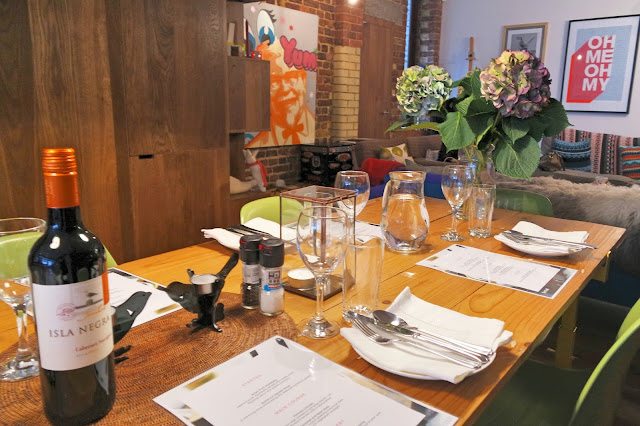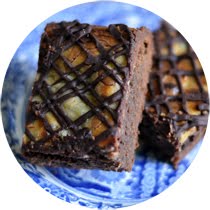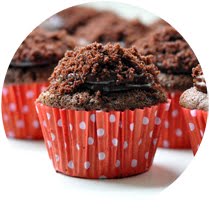If you hadn't figured by now, I love food. I guess my whole blog would be a sham if I didn't..."Sophie kind of, sort of, sometimes Loves Food" isn't quite the same. One of the key parts of featuring recipes and reviews on this corner of the Internet is ensuring that I try, to the best of my ability, to include a selection of bright, clear and simple images.
As with anyone's, these will improve over time. For example, take a look the archives and see how each post is a progression from the last. There's still a lot more I'd like to learn and improve on, but its more of a journey than a destination but I'm happy to say that I'm working on it.
Earlier on in the month I was invited to attend a photography workshop at the Nikon School in London by Curry's and Joe Blogs. I was keen to use this as an opportunity to push myself, get over my fear of artificial lighting and try a few new things.
My normal photographing routine is fine for daylight, but there's only so much you can arrange your life around getting images for your blog come winter time when there's minimal natural light. I.e. baking at midnight to be able to take pictures before work in the morning!
During the workshop, I joined some bloggers from a range of backgrounds where Mr Nikon walked us through the basics of light and camera settings before being let loose on some photography sets. A selection of food was set up from fruit to Christmas cake with some studio lights. It was good to have a play around and challenge myself to get some natural shots with artificial lights I'm not used to working with.
It got me thinking hugely about food photography, my tips and how I can improve myself. So grab a cup of tea and off we go...
S T Y L I N G
- Use simple plates and bowls with no large distracting prints. Blue and white colours tend to work best for food so keep a little selection of crockery and cutlery you like to use for photos.
- In terms of props, keep it simple, too many can be distracting. Raw ingredients are good to use as props, for example, an unwrapped bar of chocolate used to make chocolate mousse peaking in the corner. Other great props include utensils or anything used in the process of making the food. This gives a good natural feel to photos. Think knives, chopping boards etc. Whatever you use as a prop, make sure its relevant to the dish itself or complimentary.
- For backgrounds, keep a selection of wallpaper samples, tea towels, boards, floor tiles and vinyl sheets. I love these sheets of slate or marble vinyl, prices start from on £2.49 per metre and you can just wipe them clean and roll them up to store. Alternatively, as they are self adhesive so you can stick them to some thick card sheets. Old potato sacks from eBay or greengrocers are another favourite.
- Keep plates and boards clean, especially for close up photos - there's nothing worse than smears or mess.
- Some foods, particularly meats look best when plump and juicy so you may want to think about photographing them before fully cooked.
- To make vegetables and meats look a little fresher, spritz with water or oil if you feel necessary.
- Think of textures and colour. With a wooden worktop and chocolate cake, use a splash of colour with a tea towel or coloured plate, again ensuring that its complimentary. Layer up a few plates and bowls and different boards of different textures to add some dimension.
L I G H T I N G
- Ideally food looks best under natural lighting, never, ever use flash. But it is totally possible to achieve equally good photos with artificial lighting, especially during the winter months. Move around to find the best lighting in your home, I sometimes use my ironing board as a portable shelf to chase the light round different rooms of my flat.
- If using natural daylight, shoot near a window using a bed sheet to diffuse light if needed, this will remove any harsh shadows. Sorted Food's YouTube video with Izy Hossack is good to get you started.
- Use a reflector like this one to bounce either daylight or artificial light. This will also diffuse shadows and enhance the light you have. Alternatives to a reflector are large sheets of card or softboard placed side on to your food like this. Failing that, I've taken a side of an old cardboard box and covered it with tin foil in the past.
- If you're really stuck for light, i.e. Winter evenings, then use some extra lighting. I have an old bedside lamp with the shade taken off which is more than enough. Think of a clock, your dish will be in the centre, background/kitchen counter at 12 o' clock, lamp or lighting at 3 o' clock, camera at 6 o'clock and a bounce card or reflector at 9 o' clock; just like this. Just be sure to set your white balance appropriately (I'll talk more about this later).
I D E A S
- For recipe posts, try photographing the steps in the cooking process. You won't need to photograph every step, just a few to help readers understand the final image, especially if there's a specific technique. For example, soups don't always look to great as a final image, neither does bread and butter pudding.
- You don't necessarily have to include images of the final thing, similar to above, be mindful of the cooking process and how you can best capture them.
- Sometimes its good to add a little reality. By this I mean adding a hand stirring or chopping, just to show a human element rather than 'this looks like something from a cookbook I won't ever be able to make'.
- Try a few different angles like shooting at 45 degrees, overhead or head on. I like to photograph large layer cakes from a low vantage to give the impression that the cake towers above the table. For slices of cake, try an overhead shot. Don't try anything too obscure, keep it simple. When shooting a particular dish, take a few images from each angle, its best to load them all onto your computer and have more of a selection to choose from.
- Think about what exactly you're capturing. How about using a fast shutter speed to capture a drizzle of caramel on desserts or pouring a drink? I'd say from experience, you'll need a tripod for this, there's only so much you can balance yourself.
S O L U T I O N S
- Colours aren't true to life?
What you're looking at here is white balance. If the WB is off, then plates may look blue and food too orange under different lighting. Sometimes even the fancy technology in your phone or camera can't work this out itself, even on automatic mode. Either change the WB on camera to daylight, fluorescent etc depending on where you're shooting and the lighting. For example, fluorescent kitchen lighting is very blue/cool in colour and can make food and plates look equally as cool. Ever wondered why photos in the rest of your house or restaurants look orange? These lights tend to be much warmer which translates to orange food. You can make manual presets for your home or shooting setup. Essentially what happens is that you ask your camera to take a reading of something which is pure white, like a plate under your lighting. It'll then remember that and translate the rest of your colours in future shots taken under that preset as true to colour. Alternatively you can change the WB in photo editing software like Lightroom or Photoshop. (Another great free piece of software is Fotor which is good for beginners). - Photos are blurry or won't focus?
If an image is blurry, not enough light is getting onto the sensor of your camera. To fix this you can do a number of things. Add more light to brighten the shot, hold your camera still by using a tripod or extend the shutter speed. By having a slower shutter speed, the shutter will be open for longer meaning more light will reach the sensor. Anything over 1/60 (that's one sixtieth of a second) is fine for handheld, but for anything slower you'll need a tripod. - Want your photos to pop that little bit more?
Use software, including free versions to give a gentle boost of brightness, contrast and sharpening. Careful not to go overboard, food more than anything needs to look as natural as possible. If you don't have an expensive lens or even DSLR camera, then you can still get that shallow depth of field look where just part of the food is in focus and the background is blurred. Select the Macro setting on your phone or automatic camera and choose where you want to be focused. - Whatever you do you can't get your lighting and colours right!
If you're using a DLSR or even a fancier compact camera. Shoot in RAW format. This is the purest type of image file your camera will take. Nothing is compressed or processed. Its essentially like saving layers of the different attributes to your photo. When you open it up in Lightroom or Photoshop, you'll be able to adjust each layer as necessary. For example, brighten up the image if too dark and give colours a little boost if too cool. You've got a lot more flexibility this way without ruining the integrity of your files. They'll also keep all that information to ensure best quality. - How best to store images?
Keep duplicates of your photo files in different folders so whatever happens you'll have tip top photos or can go back to square one. I keep a folder for my RAW formats, these are the master copies but they don't have to be RAW if your camera doesn't support the files, just the biggest file size it will take. When it comes to editing, I'll create an 'Edit' folder and have duplicates of the master images, these will then be my working copies. Once I'm happy with my edits, I'll save copies into a 'Final' folder. Here, RAW files will now become TIFs which are the best format for maintaining the file integrity. Did you know each time you open a JPEG or similar file, crop it or edit it, some of the integrity will be lost? TIFs are still pretty large, so then duplicate your final selection into smaller JPEGs resized to fit your blog window. As an example, depending on the blog layout, photos will generally tend to be displayed in a size that's anywhere between 500-800 pixels wide. Any larger files will be shrunk to fit. I'll also save resized copies to suit different social media channels if I've got more time, for example, Twitter shows images as 440x220 pixels. Use this guide to find out what dimensions different social media profiles will display.
O T H E R R E S O U R C E S
- '10 Household Items That Can Improve Your Food Photography' - Pinch of Yum
- 'A Visual Feast: Todd Coleman's Food Photography Tips' - Saveur
- 'Top 20 Tips for Food Bloggers' - Cookie + Kate
- 'Best Food Photography Tips From 3 Pro Photographers' - The Kitchn
- 'Food Photography Tips for Food Bloggers' - Nutrition Stripped
- Photography Archives - Food Blogger Central
I'd love to know your tips too and what props you like using?
Thanks to Currys and Joe Blogs for inviting me to their event at the Nikon School, here's their post of the evening for more photos and information.





































